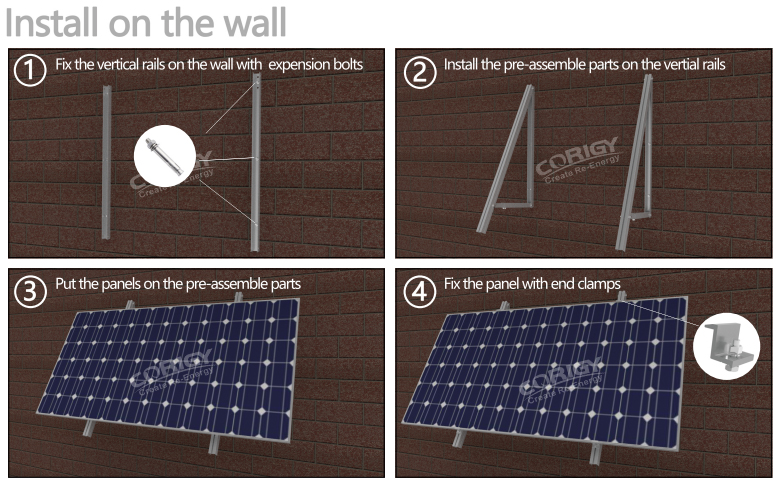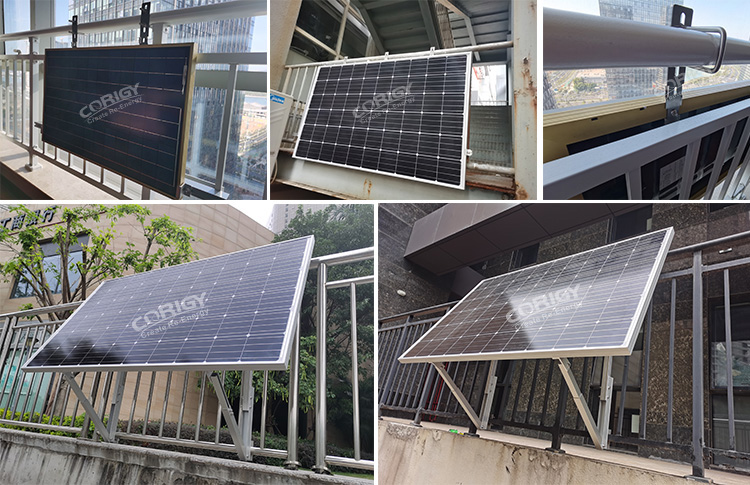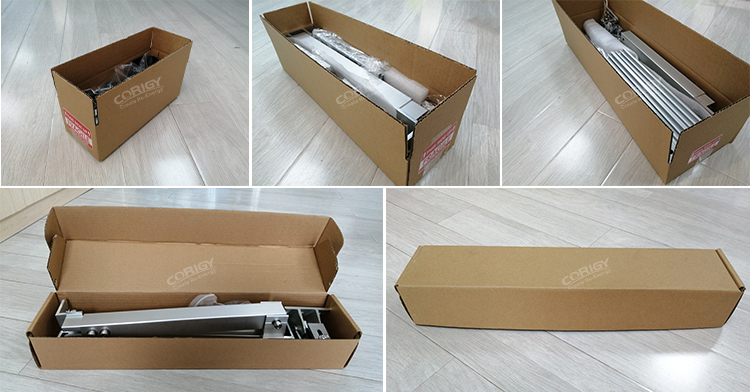Brand:
CORIGY SOLARItem NO.:
BSM10Payment:
T/T, L/C, O/A, D/PProduct Origin:
CHINAShipping Port:
XIAMENLead Time:
Depends on project time or receipt timeBalcony Solar System Mounting Bracket
The balcony solar mounting hook typically provides adjustable angles and tilt options to optimize the solar panel's positioning for maximum sunlight exposure. It allows for easy installation and removal of the solar panels, making it suitable for renters or situations where permanent installation is not desired.


|
Product Name |
Balcony Solar System Mounting Hook |
|
Mount Location |
Balcony |
|
Mount Angle |
Vertical on the floor |
|
Snow Load |
1.6KN/m2 |
|
Applicable Solar Panels |
Framed Panels |
|
Solar Panel Layout |
Horizontal Panel Installation |
|
Design Standard |
AS/NZS 1170 , DIN 1055 ,JIS C8955 2017 |
|
Rack Material |
Al6005-T5 (Surface Anodic Oxidation) |
|
Fastener Material |
SUS304/SUS410 |
|
Warranty Period |
10 years |
|
Service Life |
25 years |
|
Loading Port |
Xiamen Port,China |



Installing solar modules on a balcony using solar mounting hooks can offer several advantages:
1.Flexibility and portability: Balcony solar installations can be relatively easy to install and are often modular, allowing for flexibility. The modules can be arranged and rearranged according to your needs and can be easily disassembled and moved in case you change residences.
2. Environmental benefits: Solar energy is a clean and renewable source of power that helps reduce greenhouse gas emissions, air pollution, and dependence on fossil fuels. By installing solar panels on your balcony, you contribute to a greener and more sustainable future.
3. Off-grid possibilities: In certain cases, a balcony solar installation may allow you to operate devices or appliances independently of the grid. This can be useful during power outages or in remote locations where access to electricity is limited.




Can I install solar panel on apartment balcony?
Yes, it is possible to install solar panels on an apartment balcony under certain conditions. Here are a few points to consider:
1. Access to Sunlight: Ensure that your balcony receives adequate sunlight throughout the day. Solar panels require direct exposure to sunlight to generate electricity efficiently. Obstructions like tall buildings or trees can limit the amount of sunlight reaching your panels, reducing their effectiveness.
2. Choose appropriate solar panels: Select solar panels that are suitable for your balcony space and can withstand outdoor conditions. Compact and lightweight panels designed for residential use, such as flexible or thin-film panels, may be more suitable for balconies.
3. Mounting Options: Look for balcony solar mounting brackets or systems specifically designed for apartment balconies. These brackets are typically lightweight, adjustable, and easy to install. They are designed to attach securely to the balcony railing or other suitable mounting points without causing damage.


This portable balcony solar mount can be packed in a standard box, suitable for retailers or eBay, Amazon sellers.


Corigy
Solar has been focusing on manufacturing and design solar mounting
bracket for more than 10 years. Corigy's products have been installed
and used in more than 30 countries and regions, with a total installed
capacity of more than 8GW. After the construction is completed, all
projects are completed by the official acceptance team, and they are
currently officially put into operation.
In
terms of selection, Corigy is based on the principle of highest
quality. The bracket uses high-quality main materials high-grade anode
aluminum Al6500-T5. The surface uses anode oxidation 12-15mic. Excellent
anti-corrosive rust and anti-rust performance ensures its 30-year
service life. At the same time, the characteristics of aluminum
lightweight reduces the weight of the roof and make it safe and
reliable. The maximum wind speed can carry 60m/s, and the snow load
capacity is 1.4kn/㎡.
All
bracket solutions of Corigy are calculated based on the live conditions
environment. Corigy's advanced technical team conducted a force
analysis of the structure of the building, combined with the layout of
the bracket and photovoltaic components to verify the various feasible
bracket installation solutions to determine the most efficient,
convenient, safe and reliable solution.


